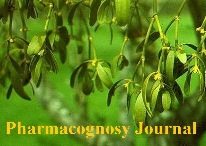Volume 2, Issue 8
The Features of Trace Elements Metabolism in Patients with Chronic Atrophic Gastritis
Author: Olga Molodovets1, Nataliya Pozur2, Lyubomyr Glushko2, Sergiy Fedorov2, Taras Gavrysh2, Nataliya Chaplynska2.
Abstract: The modern trials showed that chronic gastritis should be considered not only as a local lesion of gastric mucosa , but also as a general disease of the body, which raised all kinds of metabolism. There are occasional reports that the level of essential trace elements - Cu, Zn, Fe, Se, Mg, Mn, Co, Si (which are regarded as potentially necessary) in chronic gastritis are reduced, and their competitors conditionally toxic elements (Bi, Ni, Mo, Pb, As, Al) are increased. We examined of 126 patients with chronic atrophic gastritis (HAG): in 97 individuals we’ve diagnosed of chronic multifocal atrophic gastritis (CAMG) and in 29 patients - chronic autoimmune atrophic gastritis (CAG). Trace elements (iron, copper, zinc) in serum were determined by atomic absorption spectrophotometry (atomic absorbtion spectrophotometer C-320). Intensity of lipid peroxidation was assessed by the level of diene conjugates (DC) and active products of thiobarbituric acid (TBA). Status of antioxidant protection (AOP) identified by method of quantitative determination of catalase (C), plasma iron saturation of transferrin (IST), the activity of ceruloplasmin (CA) and carbonic anhydrase (CA). Our trial showed that in patients with chronic atrophic gastritis is present of an imbalance of trace element composition in blood, which is characterized by a significant decrease in levels of iron and zinc and copper downward trend.
Download Full Article: Click Here
Support Us
If you are interested in supporting our work and would like to contribute, you are welcome to mail me at jpbr.anil@gmail.com or at info@thepharmajournal.com it will be a great help and will surely be appreciated.

